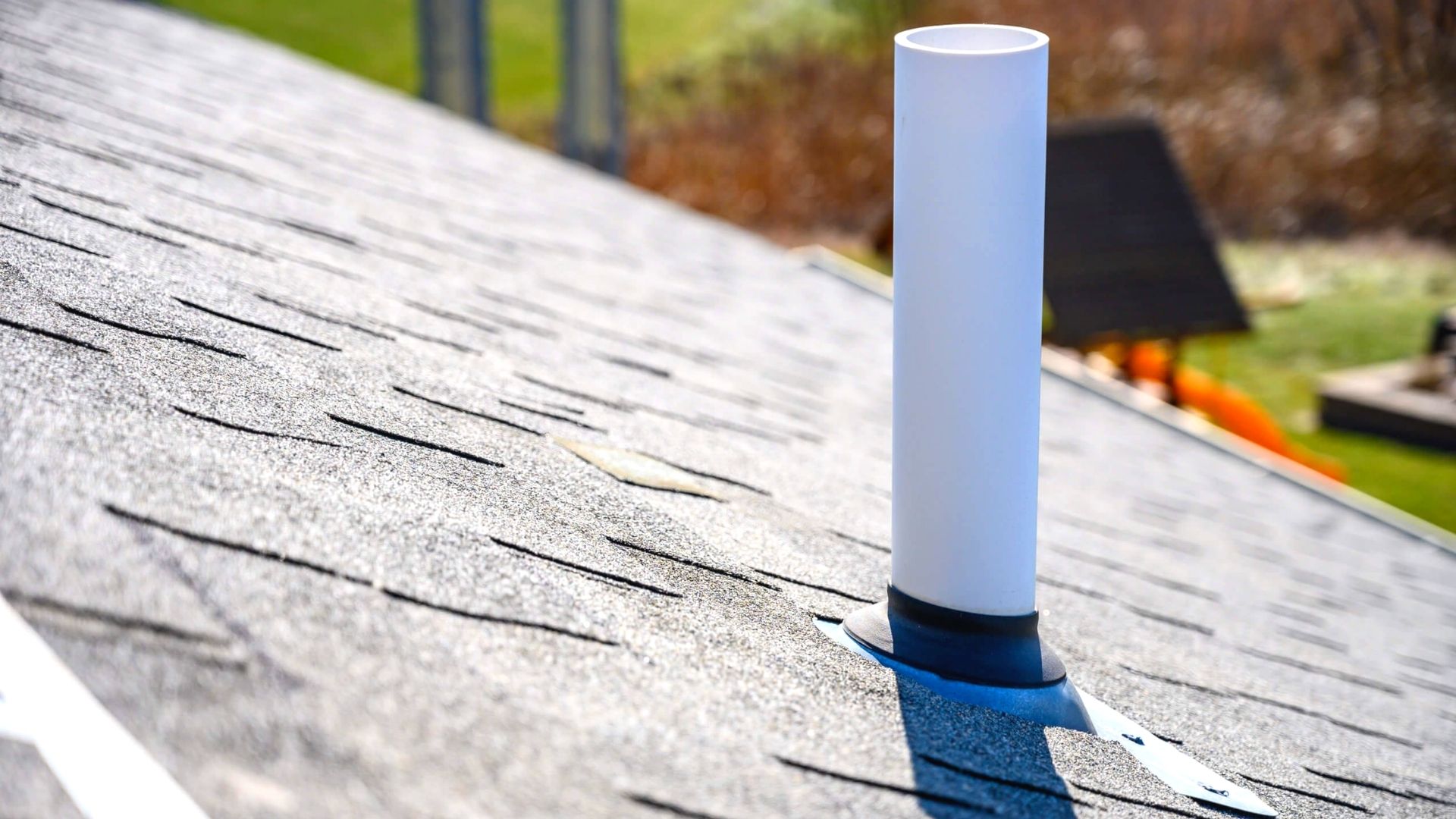Correct Ventilation in Plumbing Systems: How It Matters
Correct Ventilation in Plumbing Systems: How It Matters
Blog Article
Just how do you actually feel on the subject of What Are Plumbing Vents and Why Are They Important??

Correct air flow in plumbing systems is often ignored, yet it is important for keeping the performance and safety of your home's plumbing. Air flow helps manage air pressure, stop the build-up of unsafe gases, and make sure the efficient removal of waste. In this overview, we will discover the importance of proper plumbing air flow, exactly how it functions, and the advantages it offers your plumbing system.
Recognizing Air Flow in Pipes
Air flow in pipes describes the network of pipelines that enable air to stream with the drain system. These vents offer several functions, including regulating air pressure within the pipelines, preventing sewage system gases from getting in the home, and helping in the smooth flow of wastewater.
Just How Air Flow Works in Pipes Solutions
Air Pressure Law
Correct ventilation keeps balanced air pressure within the pipes system. When water moves through pipes, it displaces air. Without sufficient air flow, this displacement can develop negative stress, resulting in slow drains pipes or siphoning of water from catches, which can cause unpleasant odors to leak into the home.
Stopping Sewage System Gas Accumulation
One of one of the most important features of plumbing vents is to stop drain gases, such as methane and hydrogen sulfide, from accumulating within the home. These gases can posture major wellness risks and are very flammable. Vent pipelines allow these gases to leave securely outdoors.
Assisting in Waste Elimination
Ventilation assists in the efficient elimination of wastewater by avoiding airlocks in the drainage system. When air can flow easily via the vents, it allows water and waste to flow smoothly with the pipes, minimizing the threat of obstructions and backups.
Kinds Of Plumbing Vents
Main Stack Vent
The main pile vent, also called the air vent stack, is the key air vent in a pipes system. It prolongs from the major drain align through the roof covering, enabling gases to leave and fresh air to enter the system.
Branch Vent
Branch vents attach to the main pile vent and offer individual components, such as sinks, toilets, and showers. These vents make certain that each fixture has appropriate air flow to function properly.
Air Admission Shutoff (AAV).
An Air Admittance Valve (AAV) is a one-way valve that enables air to get in the plumbing system without the requirement for a traditional vent pipeline expanding through the roof. AAVs are typically utilized in improvements or locations where installing a common air vent is not practical.
Signs of Poor Ventilation in Plumbing.
Slow Draining Fixtures.
If your sinks, tubs, or bathrooms are draining pipes slowly, maybe an indication of poor air flow. Insufficient air circulation can produce a vacuum cleaner impact, making it difficult for water to drain pipes correctly.
Gurgling Appears.
Gurgling sounds originating from drains are commonly a result of air being sucked through water traps because of unfavorable pressure in the pipes. This is a clear indicator of inadequate ventilation.
Undesirable Smells.
Sewage system smells inside your home are a warning that your pipes system is not effectively ventilated. This might mean that sewer gases are not being properly vented outside, causing possibly unsafe problems.
Usual Air Flow Blunders.
Poor Vent Sizing.
Making use of small vent pipes can lead to poor air circulation and stress discrepancies in the system. It's important to utilize vents that meet the details needs of your plumbing system.
Improper Vent Placement.
Positioning vents as well far from the components they serve can lower their efficiency. Proper placement ensures that air can stream openly and effectively with the system.
Ignoring Code Needs.
Building regulations offer details guidelines for pipes air flow. Ignoring these codes can cause a system that fails to work appropriately and may cause pricey repair work or health hazards.
Advantages of Correct Ventilation.
Enhanced System Effectiveness.
Appropriately aerated pipes systems run extra successfully, with less obstructions, faster draining pipes, and much less pressure on the pipelines. This effectiveness prolongs the life expectancy of the plumbing system.
Improved Air High Quality.
By avoiding sewer gases from entering your home, proper air flow adds to much better indoor air top quality, making your living atmosphere healthier and much more comfortable.
Avoiding Water Damage.
Appropriate ventilation helps prevent water from being siphoned out of traps, which can result in drain gases getting in the home and triggering water damage gradually.
Actions to Guarantee Proper Air Flow.
Consulting Plumbing Codes.
Constantly seek advice from local pipes codes when developing or changing your plumbing system. These codes supply the necessary guidelines for correct venting and guarantee your system fulfills safety criteria.
Regular Assessment and Maintenance.
Regular assessments can aid identify possible ventilation issues before they end up being major problems. Upkeep jobs, such as cleaning air vent pipelines and looking for obstructions, are necessary for keeping the system in good working order.
Professional Installment.
For brand-new installations or major modifications, it's a good idea to hire a professional plumbing technician. They have the knowledge to make certain the ventilation system is properly made and installed according to code.
Conclusion.
Proper ventilation is an important element of any type of plumbing system, guaranteeing that it functions successfully and securely. By comprehending the importance of air flow, acknowledging the signs of inadequate ventilation, and taking actions to preserve your system, you can avoid pricey problems and protect your home's air quality.
4 Things You Should Know About Your Plumbing Vents
What Plumbing Vents Are
Also called a vent stack, a plumbing vent is a vertical pipe attached to your drain line that runs through your roof. The plumbing vent pipe, or plumbing air vent, removes gas and odors from your plumbing system and allows fresh air to enter the pipes, helping the water to flow out of the drain pipes.
What Plumbing Vents Do
Plumbing vents have two basic functions. One of which is to allow unpleasant smelling wastewater and sewer gasses to escape your plumbing system instead of entering your home. Plumbing vent pipes are typically located on roofs, away from windows, to ensure the fumes exit the home completely.
The other function of the plumbing vent is to move fresh air into your plumbing system. This helps move water through every plumbing fixture in your house, like toilets and sink drains. Think of the way in which you need to let a little air into the bottle as you pour soda in order to make the drink flow smoothly.
Different Types of Plumbing Vents
True vent: This is the most common vent option. In simplest terms, a true vent is a vertical pipe attached to your drain line that exits through the roof. They often function as the main vent that other fixtures can connect to. Re-vent pipe or auxiliary vent: Attached to the drain line near specific plumbing fixtures, re-vent pipes run up and over to connect to the main vent. Common vent: Two plumbing fixtures installed on opposite sides of a wall are typically tied into the vent stack using something known as a sanitary cross. Wet vent: This venting option operates as a drain pipe and a vent at the same time. Wet vent drainage systems drain water from one fixture while venting the air from another. Although they’ve been used for over 100 years, wet vent systems have only recently been added to the plumbing code in many areas. If you’re planning on installing one in a bathroom remodel, make sure you check your local code prior to construction. Loop vent: For free-standing fixtures like kitchen island sinks, loop vents are ideal. These vent pipes run under the floor, rise from the P-trap, and create a loop inside the cabinet sink. Air admittance valve: An AAV is a one-way mechanical valve typically installed at the site of the plumbing fixture. AAVs allow venting to occur without having to tie into a larger venting system. They’re ideal for venting fixtures where you aren’t able to easily connect to an existing vent system. Common Plumbing Vent Issues
Although vent pipes typically don’t have water flowing through them, they’re still subject to many typical plumbing issues. For example, clogs are one of the most common problems associated with sewer vent pipes. If your vent pipe gets clogged, all of your plumbing fixtures tied into the vent stack will be affected.
A sink with a slow drain that bubbles and gurgles or a strong sewage smell around your toilet are both indicators that your toilet vent pipe is clogged. Because most vent pipes exit through the roof, old leaves, twigs or even a bird’s nest could be clogging the pipe.
Clogs in your vent pipe system cause a buildup of negative pressure, meaning that water won’t be able to flow out of your home very well. It’s similar to putting your finger over the opening of a straw to trap water inside. When you remove your finger, the water is able to flow out of the straw.
If you suspect you have any blockage in your vent, make sure you have a professional come examine the situation. Left unchecked, a blocked air vent can lead to other costly repairs, like leaks and sediment buildup.
Under Pressure
Pipe vents are essential aspects of a home’s plumbing system. Owning a home means learning about all sorts of things you never put much thought into before. But by understanding as much as you can about the important systems of your home, you can keep those budgets intact and those anxiety levels low.
https://www.homeserve.com/en-us/blog/home-improvement/plumbing-vents/

Hopefully you enjoyed our piece on . Thanks so much for finding the time to read our short article. For those who enjoyed our article kindly remember to share it. We love your readership.
Book Service Report this page